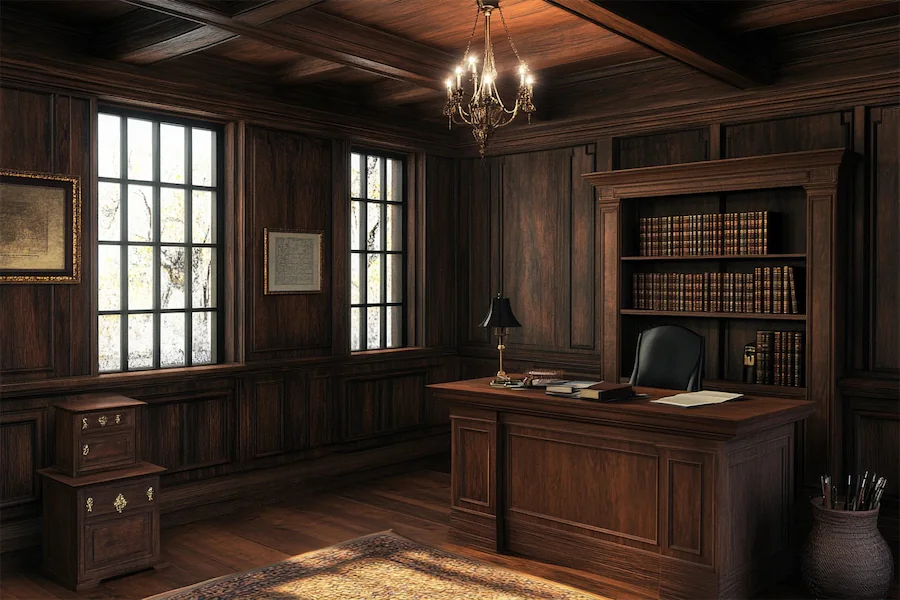A Tudor-style office room reflects the architectural and interior design elements of the Tudor period, characterized by rich wood paneling, exposed beams, and leaded glass windows.
Introduction to Tudor-Style Office Rooms
Tudor-style interiors are known for their warm, inviting atmosphere, achieved through the use of natural materials and intricate craftsmanship. In an office setting, this style creates a distinguished and cozy workspace that combines functionality with historical charm.
History and Origins of Tudor-Style Office Rooms
The Tudor architectural style originated in England during the late 15th and early 16th centuries. It is characterized by steeply pitched gable roofs, decorative half-timbering, and tall, narrow windows with small panes. Interiors often featured wood-paneled walls, large fireplaces, and exposed wooden beams, elements that have been adapted into modern Tudor-style office designs to evoke a sense of historical elegance.
Key Features of Tudor-Style Office Rooms
- Wood Paneling: Walls adorned with dark wood paneling add depth and warmth to the space.
- Exposed Beams: Ceilings with exposed wooden beams contribute to the rustic charm typical of Tudor design.
- Leaded Glass Windows: Windows with leaded glass panes introduce natural light while maintaining privacy and historical accuracy.
- Grand Fireplaces: A large, ornate fireplace serves as a focal point, providing both warmth and aesthetic appeal.
- Antique Furnishings: Incorporating period-appropriate furniture, such as heavy wooden desks and upholstered chairs, enhances the authenticity of the design.
Applications of Tudor-Style Office Rooms
- Home Offices: Creating a dedicated workspace that reflects the timeless elegance of Tudor design.
- Corporate Offices: Designing executive suites or meeting rooms with Tudor elements to convey a sense of tradition and stability.
- Libraries and Studies: Establishing reading or study areas that benefit from the cozy and scholarly atmosphere of Tudor interiors.
Considerations When Designing a Tudor-Style Office Room
- Lighting: Ensure adequate lighting to balance the dark tones of wood paneling and furnishings.
- Space Planning: Arrange furniture to facilitate workflow while maintaining the room’s historical character.
- Material Selection: Choose authentic materials and finishes to preserve the integrity of the Tudor style.
Conclusion
A Tudor-style office room offers a unique blend of historical charm and functional design, creating an environment that is both inspiring and comfortable. By incorporating key elements such as wood paneling, exposed beams, and antique furnishings, one can achieve a workspace that reflects the enduring appeal of Tudor architecture.
